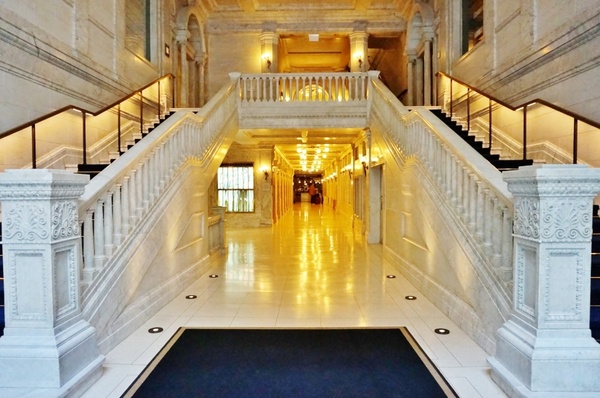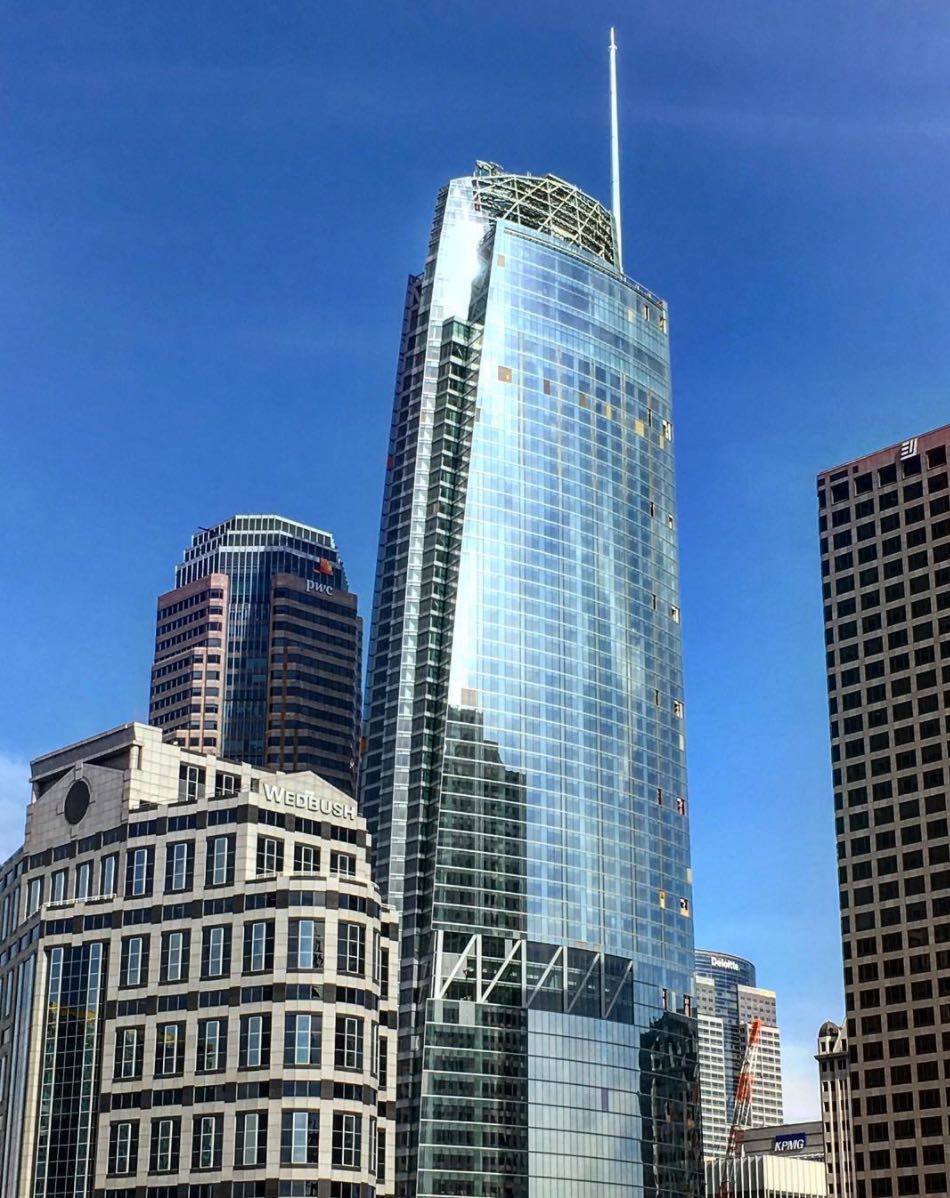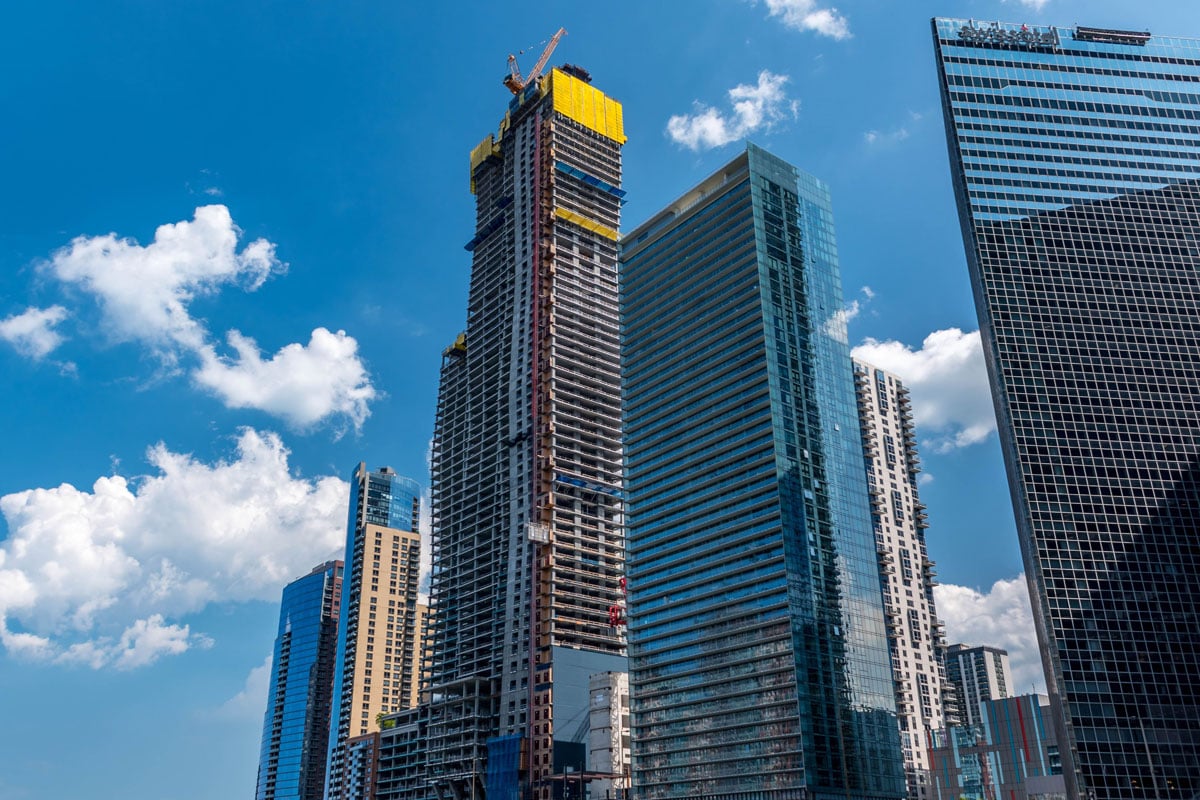Helping to Preserve Chicago Architecture: The Kimpton Gray Hotel
Chicago’s elegant Kimpton Gray Hotel opened its doors this past August. Blair Kamin, the Chicago Tribune’s architecture critic, noted that the new hotel “gracefully restores” the historic New York Life Insurance Building designed by William Le Baron Jenny, “the father of the skyscraper.” We were able to employ our experience working with landmarks and hotel renovations to facilitate the necessary permits and approvals for the 293-room Kimpton Gray Hotel’s historic building.
Importance of Preserving the Building Housing the Kimpton Gray Hotel
William Le Baron Jenny pioneered the use of a steel skeleton frame instead of masonry walls to support a building when he designed the Chicago Home Insurance Building, built in 1884. The use of the steel frame made modern skyscrapers possible. Unfortunately, the Chicago Home Insurance Building was demolished in 1931.
The New York Life Insurance Building, located in Chicago’s financial district, is the oldest remaining Jenny’s designed building using the same novel steel structure as the Chicago Home Insurance Building. Completed in 1894, the New York Life Insurance Building also contains other features from the period, such as the wide use of marble and a detailed terracotta facade design.
According to Kamin, the New York Life Insurance Building’s preservation was not always a certainty. Despite efforts to save the building by Preservation Chicago, there was a plan to demolish much of the New York Life Insurance Building a decade ago to make way for a new hotel. Fortunately, Kimpton Hotels bought the property in 2014 and realized the importance of its preservation. The company, known for its boutique hotels, brought in the architectural firm Gensler to transform the historic building into a hotel.
Proactive Permit Approach Prevents Landmark Status From Causing Delay
Burnham needed to devise a strategy so the hotel’s historic status did not postpone the receipt of critical permits. A number of the hotel’s historic features required review by the Commission on Chicago Landmarks (Commission) which can be a lengthy process. The Commission must review the permit applications of “designated and proposed Chicago landmarks” to make sure a project doesn’t adversely impact important elements of the landmark.
We recommended dividing the permit submittal process so that any features that needed to be reviewed by the Commission would not delay the rest of the project. For example, we obtained separate permits that included exploratory demolition as well as interior demolition and structural reinforcing for a new stair. This allowed for the demolition and structural work to begin long before any renovations to the building’s interior.
Also. the hotel’s lobby contains the original pair of grand staircases surrounded by two stories of gray marble. The staircases needed to be reviewed by the Commission so we decided to exclude the first two floors from the general permit for the rest of the building. This enabled renovations to start on the remaining floors, a much more efficient and cost-effective approach for our client, while the Commission reviewed the separate permit for the levels containing the historic staircases.
Staging the Public Way Use Permits to Keep on Schedule
The Chicago Department of Business Affairs and Consumer Protection must issue a Public Way Use Permit (Grants of Privilege) for anything that “extends over, under or is on the public right of way.” To obtain Grants of Privilege, a project must receive Chicago City Council approval. The Kimpton Hotel needed Grants of Privilege for different components, such as underground vaults, canopies, awnings, signs, and the existing pilasters.
Additionally, canopies, awnings, banners, and signs identifying the business require a sign construction permit from the Chicago Department of Buildings. Only an approved sign contractor can apply for the sign construction permit. Normally, one applies for the Grants of Privilege and the sign construction permit simultaneously.
Burnham recommended applying separately for the Grants of Privilege and sign construction permit for the Kimpton Gray Hotel. The hotel had not finalized which tenants would be needing signs when we were ready to begin the application process for the canopy and awning Grants of Privilege.
We wanted to apply for the Grants of Privilege as early as possible. Given the exterior is also historic, we knew the hotel would also need to go through the lengthy Commission approval process for the canopies, awnings, and signs. By staging the permits for the different components, the canopies and awnings, although blank, would be in place with plenty of lead time. Our team also advised the out-of-town sign contractor on the Chicago processes for landmark approval and obtaining a sign construction permit.
We are proud to have participated in this project to preserve the New York Life Insurance Building where, according to Kamin, “you see the unmistakable imprint of the robust, structurally expressive design that put Chicago on the architectural map.”

Featured Projects

United Center
Chicago

Wilshire Grand Center
Los Angeles

Mansueto High School
Chicago

Studio Gang’s Vista Tower
Chicago

